Samastipur (and onwards), India, 29/12/1993
Photographs of locomotives at Samastipur locomotive shed and trains at Samastipur Junction station and a couple of other stations, north India.
The group arrived in Muzzaffarpur where a visit to another sugar mill nearby had not been possible. So instead, some went into town to have a look around and see what there was to buy. However, the real railway enthusiasts caught a local train to Samastipur where there was a locomotive shed still servicing steam locomotives.
The locomotive shed at Samastipur was for the metre gauge and was active with classes YP 4-6-2 and YG 2-8-2 locomotives present. The nearby Samastipur Junction station had both metre gauge and broad gauge tracks, with steam seen on the metre gauge and diesel on the broad gauge.
Muzaffarpur
Those who had visited Samastipur returned by train to Muzaffarpur to rejoin the rest of the tour group and catch the overnight train towards New Jalpaiguri and the Darjheeling Himalaya Railway.
Mansi Junction
On the journey to New Jalpaiguri, for the Darjeeling Himalaya Railway, the group’s train stopped for a while at Mansi Junction, where there was a very crowded train hauled by a metre gauge YP 4-6-2 stopped alongside.
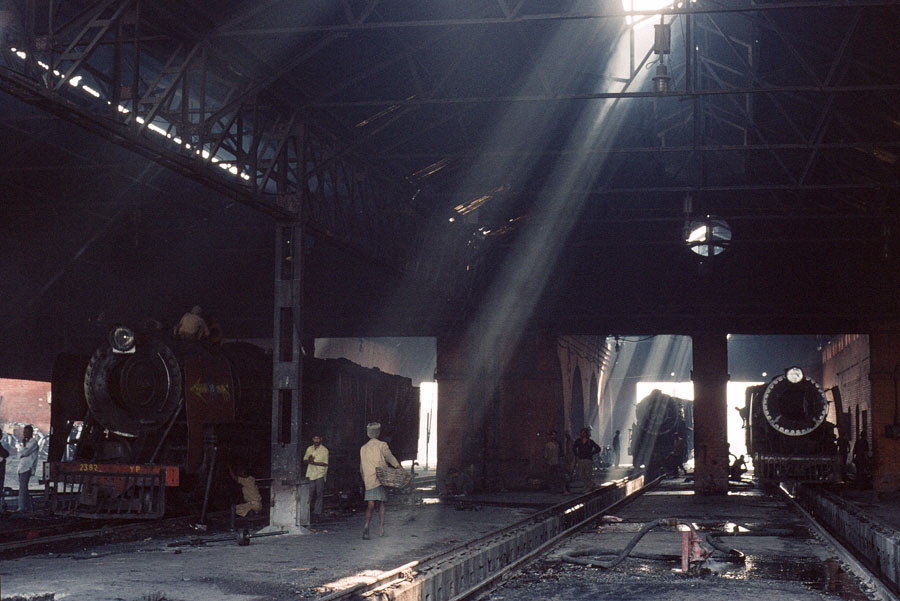
1-of-21) Metre gauge steam locomotives under repair in Samastipur locomotive shed. On the left is class YP 4-6-2 2382, built by Telco (Tata Engineering and Loco Co) in 1957.
Click here for a high-resolution image.
This photograph is available for use under a Creative Commons Attribution-ShareAlike 4.0 International license. Attribution should include a link to www.nigeltout.com.
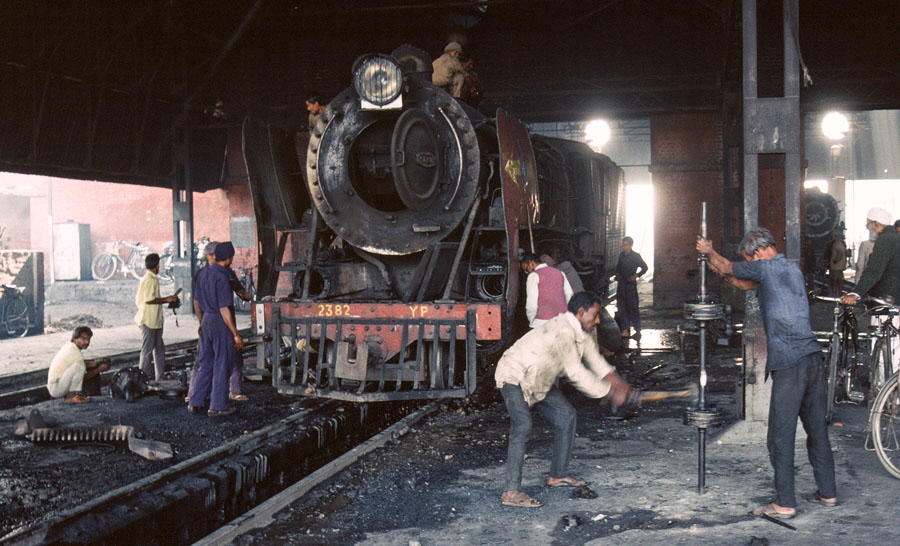
2-of-21) Metre gauge class YP 4-6-2 2382, built by Telco (Tata Engineering and Loco Co) in 1957, under repair in Samastipur locomotive shed. A piston valve is seen receiving some adjustment.
Click here for a high-resolution image.
This photograph is available for use under a Creative Commons Attribution-ShareAlike 4.0 International license. Attribution should include a link to www.nigeltout.com.
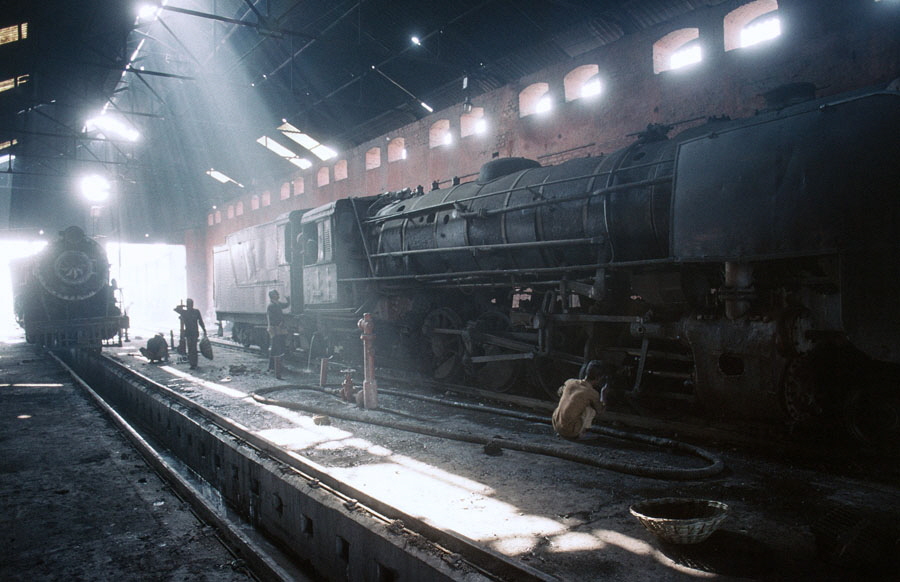
3-of-21) Metre gauge steam locomotives being serviced in Samastipur locomotive shed.
Click here for a high-resolution image.
This photograph is available for use under a Creative Commons Attribution-ShareAlike 4.0 International license. Attribution should include a link to www.nigeltout.com.
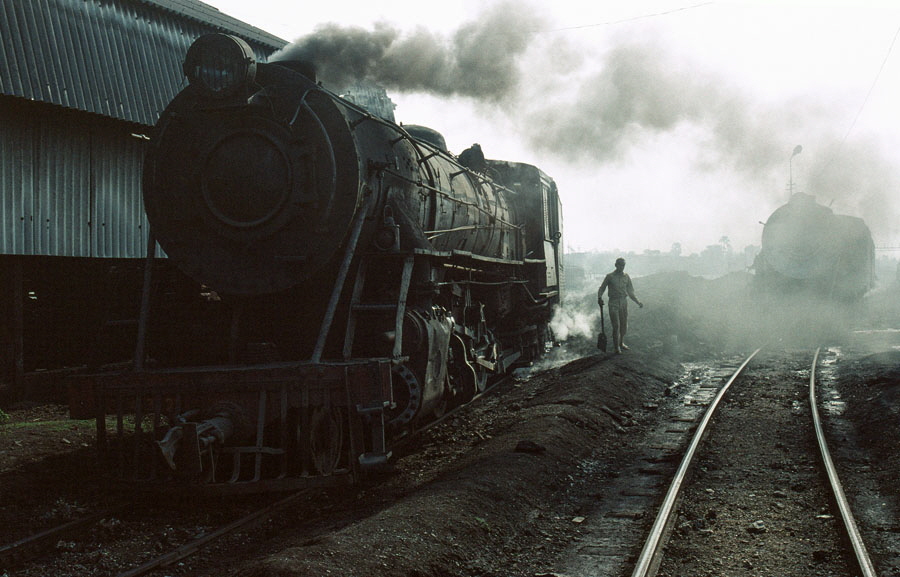
4-of-21) Metre gauge locomotives by the ash pits at Samastipur locomotive shed with a YG 2-8-2 on the left. This graphically illustrates some of the dirt associated with the operation of steam locomotives.
Click here for a high-resolution image.
This photograph is available for use under a Creative Commons Attribution-ShareAlike 4.0 International license. Attribution should include a link to www.nigeltout.com.
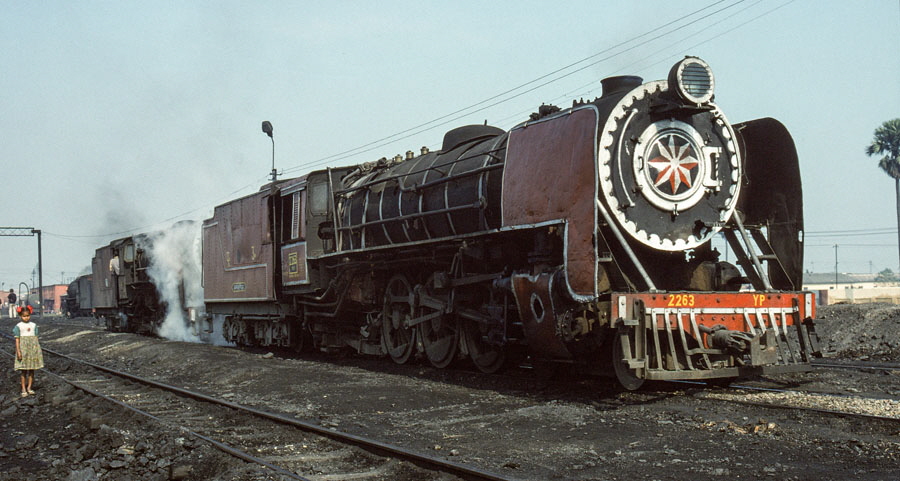
5-of-21) Metre gauge class YP 4-6-2 locomotive no. 2263 (built by Krauss-Maffei in 1954) at Samastipur locomotive shed, with a YG 2-8-2 on the left. The smart young girl on the left was interested to see what the strange foreigners were doing, wandering around and photographing the steam locomotives.
Click here for a high-resolution image.
This photograph is available for use under a Creative Commons Attribution-ShareAlike 4.0 International license. Attribution should include a link to www.nigeltout.com.
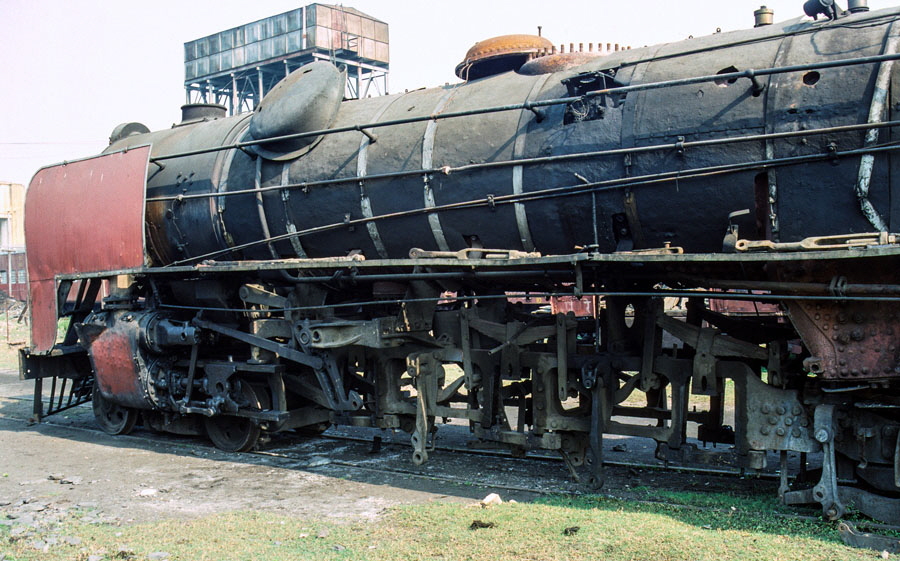
6-of-21) Metre gauge class YP 4-6-2 locomotive no. 2258 (built by Krauss-Maffei in 1954) with driving wheels removed, revealing the bar frames.
Click here for a high-resolution image.
This photograph is available for use under a Creative Commons Attribution-ShareAlike 4.0 International license. Attribution should include a link to www.nigeltout.com.
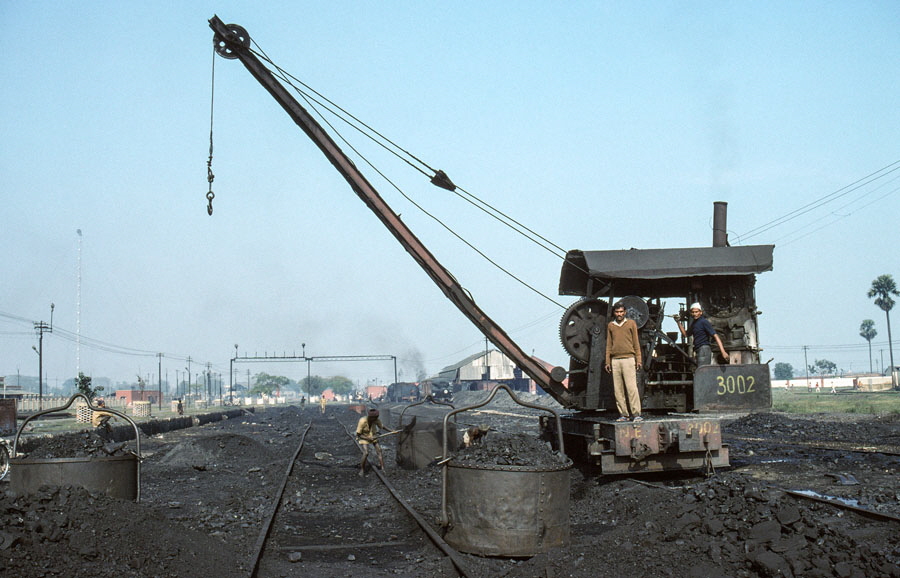
7-of-21) Steam crane, used for coaling locomotives, and crew at Samastipur locomotive shed.
Click here for a high-resolution image.
This photograph is available for use under a Creative Commons Attribution-ShareAlike 4.0 International license. Attribution should include a link to www.nigeltout.com.
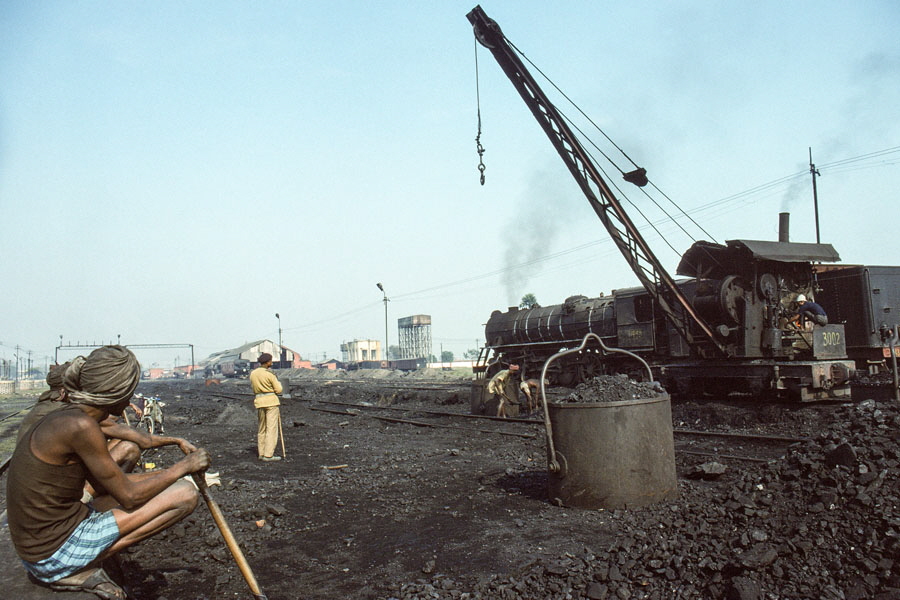
8-of-21) The labourers on the left rest and watch their colleagues near the locomotive shovel coal into the bucket ready for the steam crane to lift it into the locomotive tender, Samastipur locomotive shed. A filthy and back-breaking job. The locomotive is class YG 2-8-2 no. 3043 (built by BLW or MLW in 1949/50).
Click here for a high-resolution image.
This photograph is available for use under a Creative Commons Attribution-ShareAlike 4.0 International license. Attribution should include a link to www.nigeltout.com.
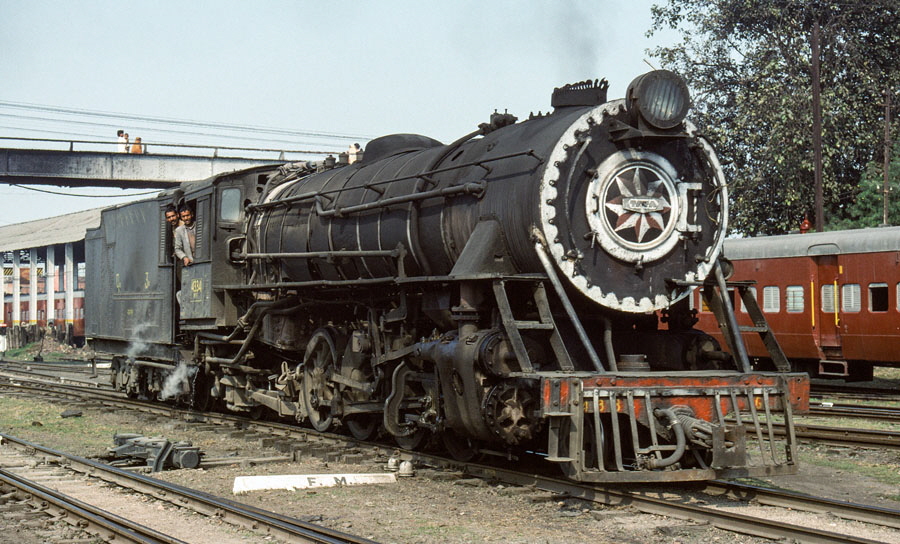
9-of-21) Metre gauge steam locomotive class YG 2-8-2 no. 4334 (built by Mitsubishi in 1956) at Samastipur Junction station.
Click here for a high-resolution image.
This photograph is available for use under a Creative Commons Attribution-ShareAlike 4.0 International license. Attribution should include a link to www.nigeltout.com.
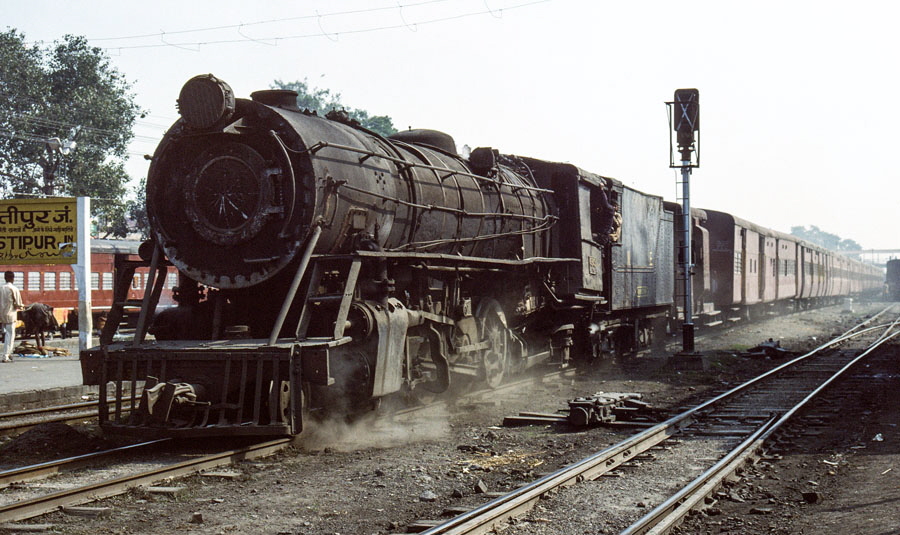
10-of-21) Metre gauge steam locomotive class YG 2-8-2 no. 434? (built by Mitsubishi in 1956) on a long train of passenger carriages at Samastipur Junction station.
Click here for a high-resolution image.
This photograph is available for use under a Creative Commons Attribution-ShareAlike 4.0 International license. Attribution should include a link to www.nigeltout.com.
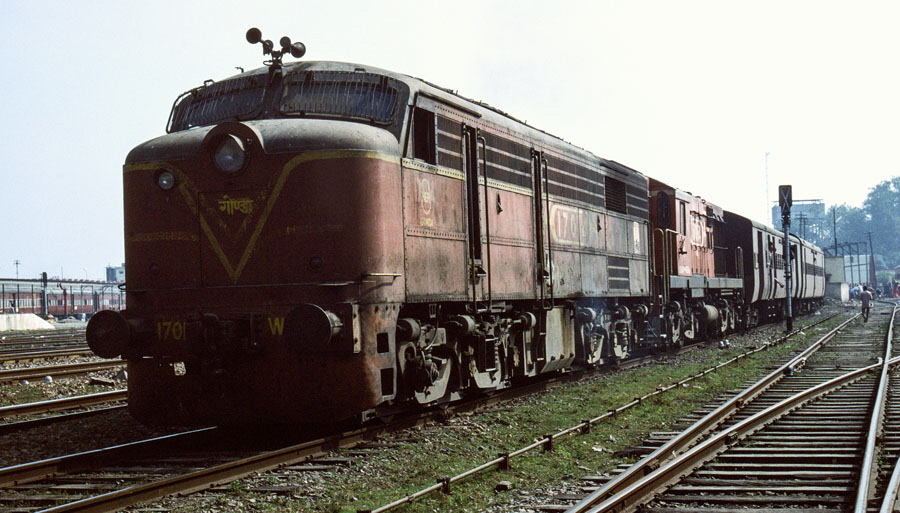
11-of-21) Broad gauge diesel locomotives arrive on a passenger train at Samastipur Junction station. The locomotives are WDM1 17014 (built by Alco in 1957) and WDM2 16054 (built by DLW in 1987-8).
Click here for a high-resolution image.
This photograph is available for use under a Creative Commons Attribution-ShareAlike 4.0 International license. Attribution should include a link to www.nigeltout.com.
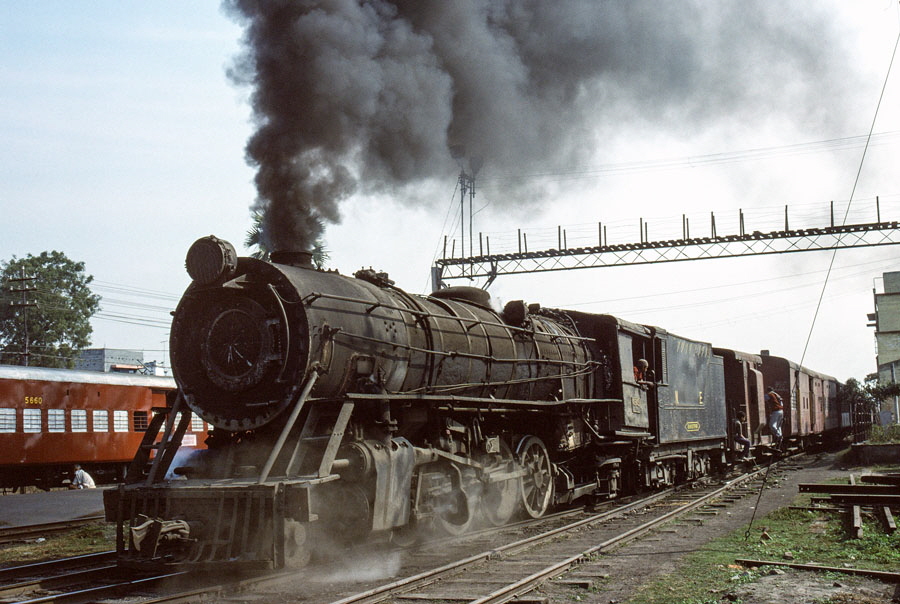
12-of-21) Metre gauge steam locomotive class YG 2-8-2 no. 4345 (built by Mitsubishi in 1956) shunts carriages at Samastipur Junction station.
Click here for a high-resolution image.
This photograph is available for use under a Creative Commons Attribution-ShareAlike 4.0 International license. Attribution should include a link to www.nigeltout.com.
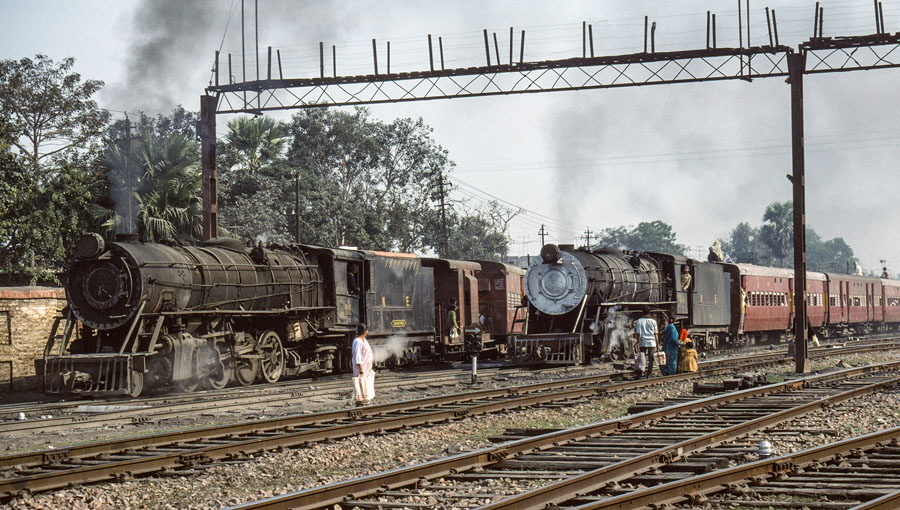
14-of-21) Metre gauge steam locomotive class YG 2-8-2 no. 3043 (built in the U.S.A. in 1949/50) on a passenger train passes YG no. 4345 (built by Mitsubishi in 1956) shunting carriages at Samastipur Junction station. Note the locals still nonchalantly crossing the track during this action, a few travellers on the carriage roofs, and the broad gauge track in the foreground.
Click here for a high-resolution image.
This photograph is available for use under a Creative Commons Attribution-ShareAlike 4.0 International license. Attribution should include a link to www.nigeltout.com.
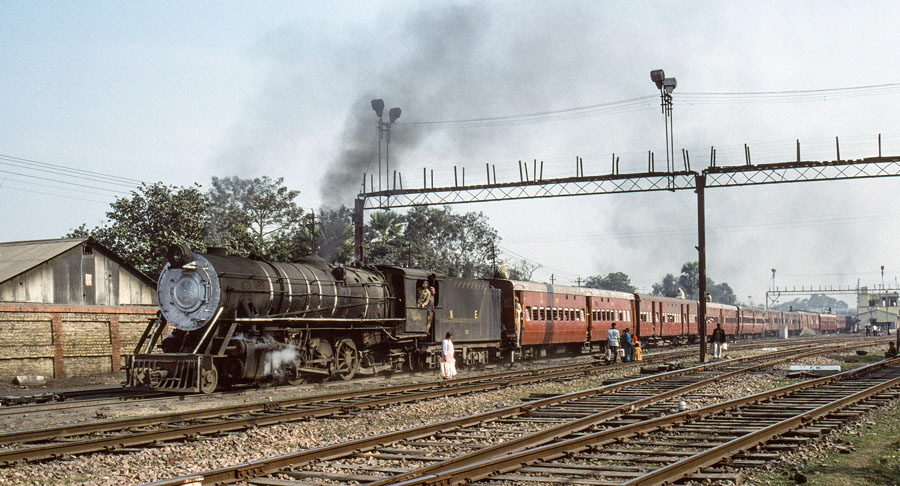
15-of-21) Metre gauge steam locomotive class YG 2-8-2 no. 3043 (built in the U.S.A. in 1949/50) gets under way as it departs Samastipur Junction station with a long passenger train past the people crossing the track.
Click here for a high-resolution image.
This photograph is available for use under a Creative Commons Attribution-ShareAlike 4.0 International license. Attribution should include a link to www.nigeltout.com.
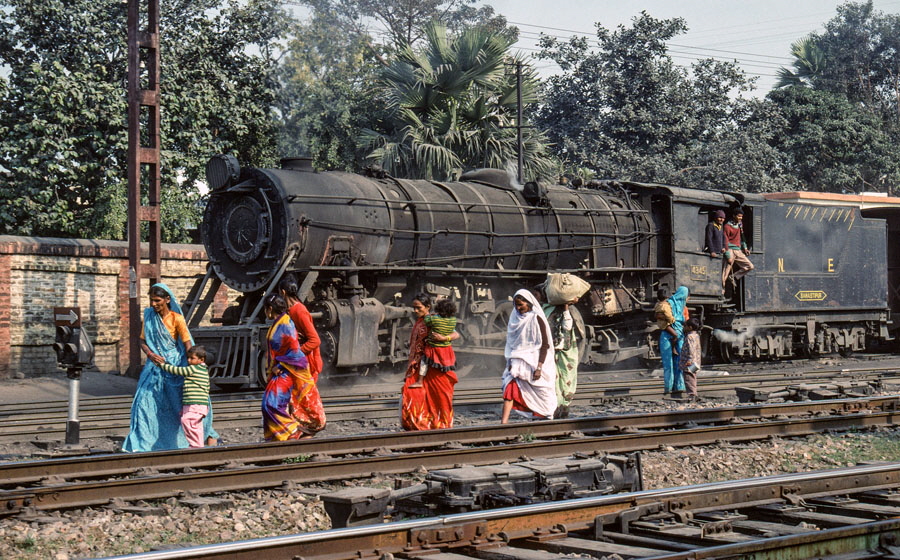
13-of-21) The track here just outside Samastipur Junction station, India, was a very popular unofficial footpath and a steady stream of people wandered across there. The locomotive is metre gauge class YG 2-8-2 no. 4345 (built by Mitsubishi in 1956).
Click here for a high-resolution image.
This photograph is available for use under a Creative Commons Attribution-ShareAlike 4.0 International license. Attribution should include a link to www.nigeltout.com.
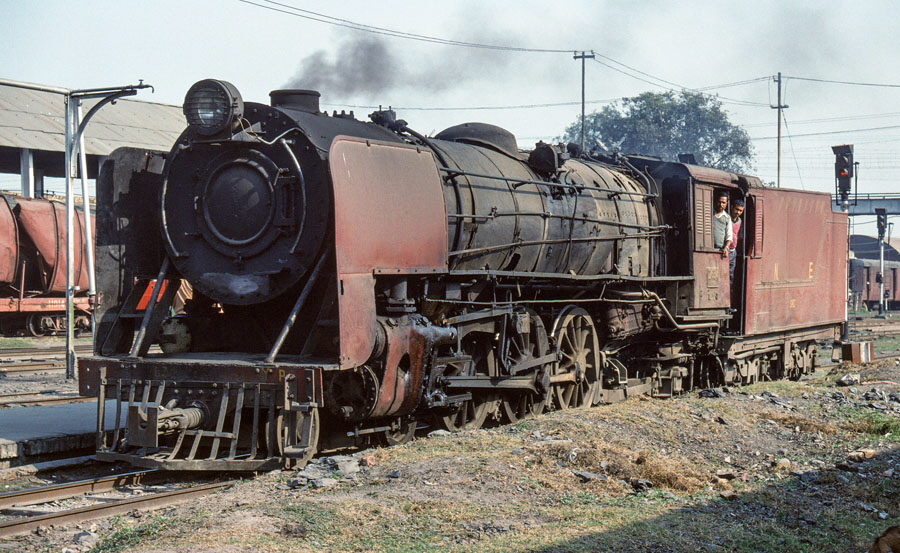
16-of-21) Metre gauge class YP 4-6-2 no. 2634, built by Telco (Tata Engineering and Loco Co.) in 1965, at Samastipur Junction station.
Click here for a high-resolution image.
This photograph is available for use under a Creative Commons Attribution-ShareAlike 4.0 International license. Attribution should include a link to www.nigeltout.com.
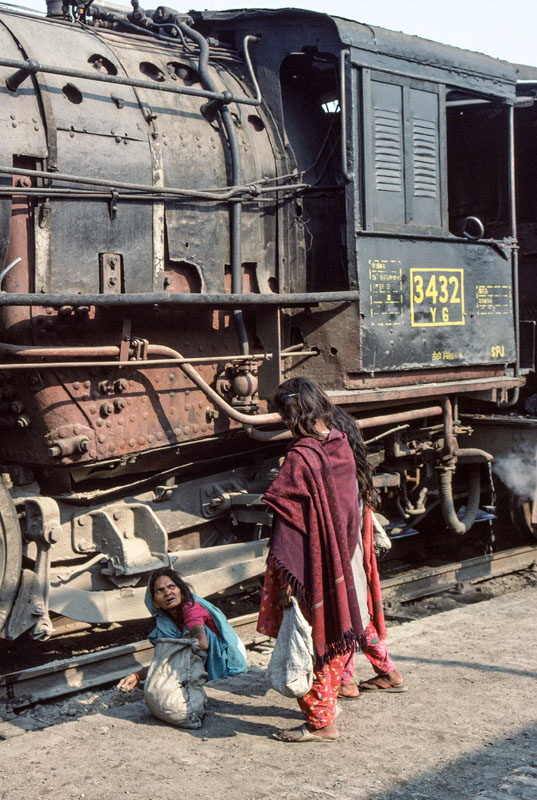
17-of-21) An occupation that was nearing extinction; gathering any bits of coal dropped from the ashpan of steam locomotives, here metre gauge class YG 2-8-2 no. 3432, built by Telco (Tata Engineering and Loco Co.) in 1962, at Samastipur Junction station.
Click here for a high-resolution image.
This photograph is available for use under a Creative Commons Attribution-ShareAlike 4.0 International license. Attribution should include a link to www.nigeltout.com.
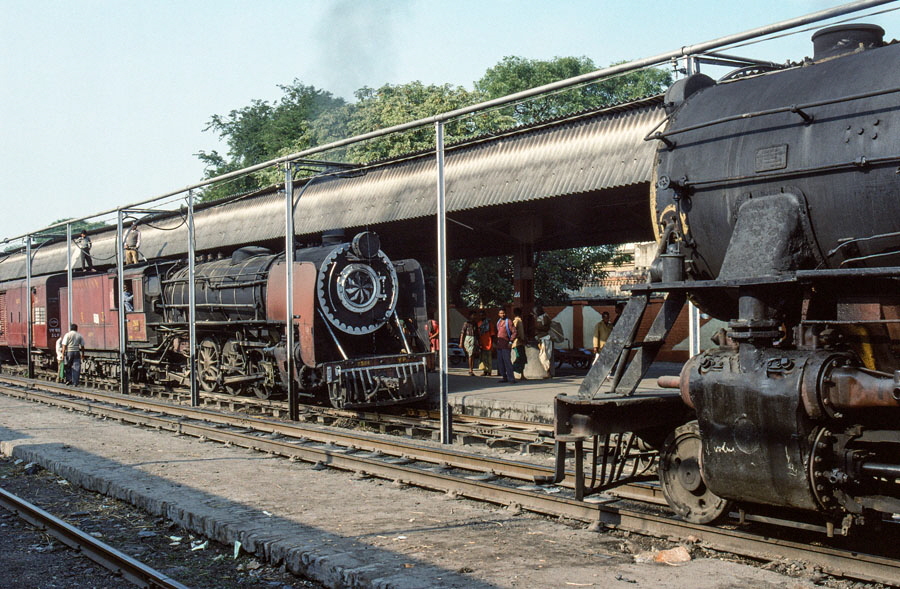
18-of-21) Metre gauge class YP 4-6-2 no. 2564, built by Telco (Tata Engineering and Loco Co.) in 1964, stands in the platform at Samastipur Junction station.
The train is standing under a structure with hoses which appears to be used for topping up the water tanks of coaches. Here, one man seems to be standing on the end of the first coach and the one with the hose appears to be standing on the tender and directing water down into the cab. The tender water tank usually has a filler at the rear and it would take a long time to fill it with that small hose, so I am guessing that they are perhaps supplying drinking water to the cab.
Click here for a high-resolution image.
This photograph is available for use under a Creative Commons Attribution-ShareAlike 4.0 International license. Attribution should include a link to www.nigeltout.com.
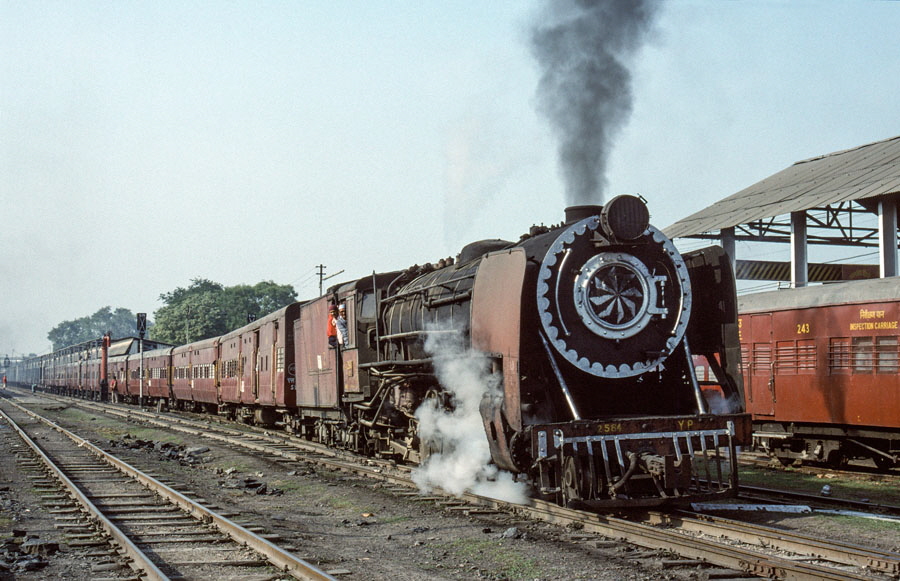
19-of-21) Metre gauge class YP 4-6-2 no. 2564, built by Telco (Tata Engineering and Loco Co.) in 1964, departs from Samastipur Junction station, India, with a passenger train.
Click here for a high-resolution image.
This photograph is available for use under a Creative Commons Attribution-ShareAlike 4.0 International license. Attribution should include a link to www.nigeltout.com.
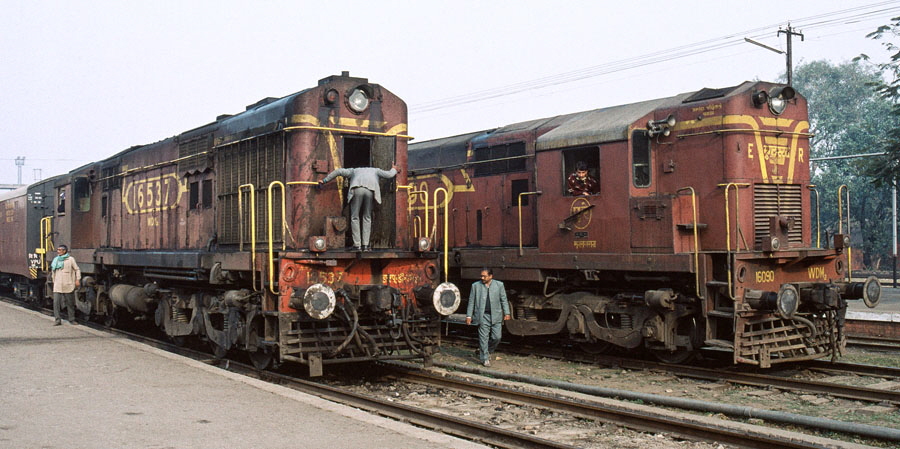
20-of-21) Broad gauge diesel locomotive class WDM2 16537 gets an internal inspection inside the long hood, before an evening departure with an overnight passenger train, at Muzaffarpur station, India, 29th December 1993. This was the train that the tour group was taking and the state of the locomotive and it being inspected did not inspire confidence. Alongside, showing its short hood, is WDM2 16090.
Click here for a high-resolution image.
This photograph is available for use under a Creative Commons Attribution-ShareAlike 4.0 International license. Attribution should include a link to www.nigeltout.com.
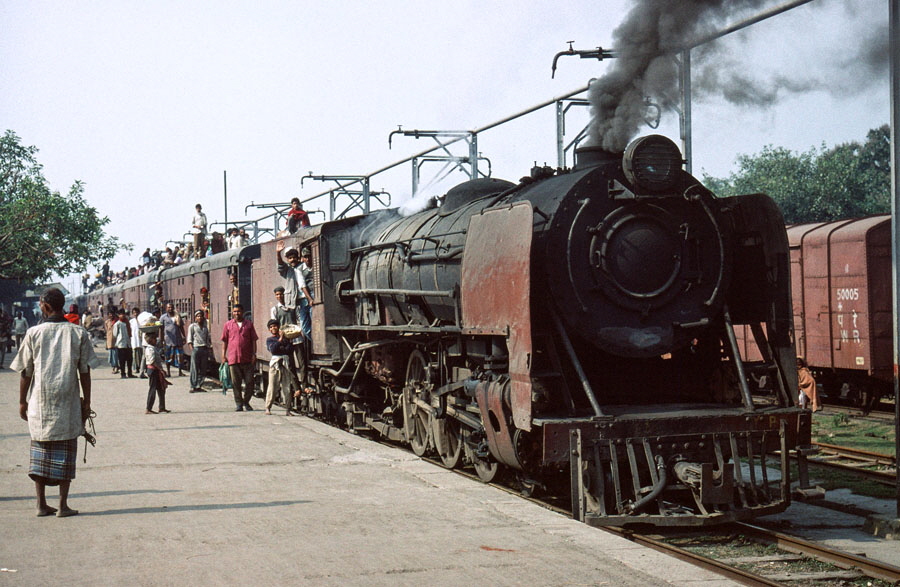
21-of-21) Metre gauge steam locomotive class YP 4-6-2 no. 2634 (built by Telco (Tata Engineering and Loco Co.) in 1965) with an overflowing passenger train at Mansi Junction.
This is the classic view of a passenger train in India with people travelling on the roof. It was the only example we saw with a lot of people on the top, and steam hauled too, so a quick dash was made across the platform from our train to photograph it.
Click here for a high-resolution image.
This photograph is available for use under a Creative Commons Attribution-ShareAlike 4.0 International license. Attribution should include a link to www.nigeltout.com.
![]() Many of the photographs in these railway photograph galleries are available for use under a Creative Commons Attribution-ShareAlike 4.0 International license. Attribution should include a link to www.nigeltout.com.
Many of the photographs in these railway photograph galleries are available for use under a Creative Commons Attribution-ShareAlike 4.0 International license. Attribution should include a link to www.nigeltout.com.